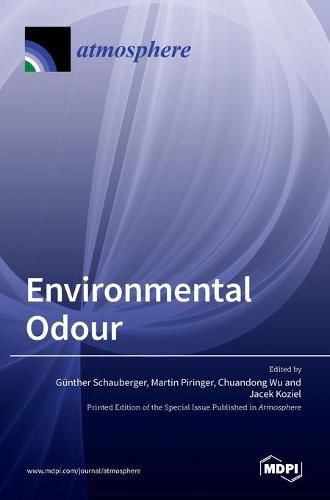Readings Newsletter
Become a Readings Member to make your shopping experience even easier.
Sign in or sign up for free!
You’re not far away from qualifying for FREE standard shipping within Australia
You’ve qualified for FREE standard shipping within Australia
The cart is loading…






This title is printed to order. This book may have been self-published. If so, we cannot guarantee the quality of the content. In the main most books will have gone through the editing process however some may not. We therefore suggest that you be aware of this before ordering this book. If in doubt check either the author or publisher’s details as we are unable to accept any returns unless they are faulty. Please contact us if you have any questions.
Environmental odour is perceived as a major nuisance by rural as well as urban populations. The sources of odourous substances are manifold. In urban areas, these include restaurants, small manufacturing trades, and other sources, which might cause complaints. In the suburbs, wastewater treatment plants, landfill sites, and other infrastructures are the expected major odour sources. These problems are often caused be the accelerated growth of cities. In rural sites, livestock farming and the spreading of manure on the fields is blamed for severe odour annoyance. In fact, environmental odours are considered to be a common cause of public complaints by residents to local authorities, regional, or national environmental agencies. This Special Issue of Atmosphere will address the entire chain, from the quantification of odour sources, abatement methods, the dilution in the atmosphere, and the assessment of odour exposure for the assessment of annoyance. In particular, this Special Issue aims to encourage contributions dealing with field trials and dispersion modeling to assess the degree of annoyance and the quantitative success of abatement measures.
$9.00 standard shipping within Australia
FREE standard shipping within Australia for orders over $100.00
Express & International shipping calculated at checkout
This title is printed to order. This book may have been self-published. If so, we cannot guarantee the quality of the content. In the main most books will have gone through the editing process however some may not. We therefore suggest that you be aware of this before ordering this book. If in doubt check either the author or publisher’s details as we are unable to accept any returns unless they are faulty. Please contact us if you have any questions.
Environmental odour is perceived as a major nuisance by rural as well as urban populations. The sources of odourous substances are manifold. In urban areas, these include restaurants, small manufacturing trades, and other sources, which might cause complaints. In the suburbs, wastewater treatment plants, landfill sites, and other infrastructures are the expected major odour sources. These problems are often caused be the accelerated growth of cities. In rural sites, livestock farming and the spreading of manure on the fields is blamed for severe odour annoyance. In fact, environmental odours are considered to be a common cause of public complaints by residents to local authorities, regional, or national environmental agencies. This Special Issue of Atmosphere will address the entire chain, from the quantification of odour sources, abatement methods, the dilution in the atmosphere, and the assessment of odour exposure for the assessment of annoyance. In particular, this Special Issue aims to encourage contributions dealing with field trials and dispersion modeling to assess the degree of annoyance and the quantitative success of abatement measures.